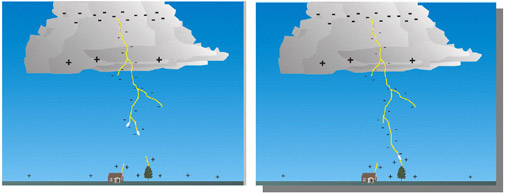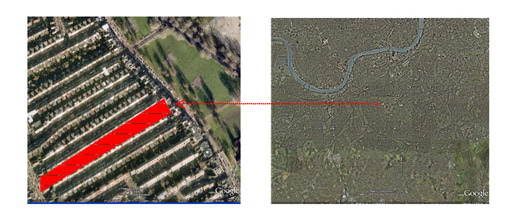Around the world, lightning strikes the ground about 100 times each second, or 8 million times a day and the damages caused by lightning strikes are very severe. However, lightning safety has been little studied and less practiced. A disciplined and systematic approach to lightning safety may result in better management of the hazard and reduced costs
Human losses and injuries
Lightning is known as one of the leading weather-related cause of deaths and injuries. Nearly 2 000 people around the globe are killed each year, thousands more survive with sequels. Eighty five percent of lightning victims are children and young men ages 10-35 engaged in recreation or work. Twenty percent of strike victims die and 70% of survivors suffer serious long-term after effects
Lightning is known as one of the leading weather-related cause of deaths and injuries. Nearly 2 000 people around the globe are killed each year, thousands more survive with sequels. Eighty five percent of lightning victims are children and young men ages 10-35 engaged in recreation or work. Twenty percent of strike victims die and 70% of survivors suffer serious long-term after effects
There is also a long list of recorded disasters caused by lightning strikes. Looking specifically at storage and processing activities, lightning accounts for 61% of the accidents initiated by natural events; in North America, 16 out of 20 accidents involving petroleum products storage tanks were due to lightning strikes.
In DRONKA – EGYPT in 1994, lightning struck the complex of eight fuel tanks. Three of the storage tanks, each holding about 5,000 tons of aircraft or diesel fuel for the army, exploded and spilt burning fuel into the village. More than 410 people were killed and more than 200 houses were destroyed and at least 20,000 terrified people fled and headed towards the provincial capital, Assiut city, five miles away.
In UNITED STATES – SONORA in 2000, lightning struck an electric transformer in a chemical plant. The resident population was evacuated within a radius of 800 m (200 persons), and housed in centers. Six people sustained injuries including four fire-fighters.
Lightning strike in PERU in 2004 caused an explosion in a civil explosive warehouse, killed six people and injury another 6.
In SPAIN – HUESCA in 2005, an explosion followed by a fire occurred at around 6.00 pm in a grain storage of a flour factory. 19 people sustained injuries of which 7 were serious. 11 people were hospitalized. The facility where about 20 employees were working was seriously damaged. The list goes on…
Impact on business
Lightning-caused problems are one of the most common troubles faced by American business today. A recent Carnegie-Mellon study showed that 33% of U.S. businesses are affected by lightning — and that more businesses are affected by lightning storms than by floods, fires, explosions, hurricanes, earthquakes, and violence.
According to a German Insurance company survey, lightning accounts for 27.4% of damages to electronic equipment. Furthermore, AXA France Insurance Company made studies and came out with the conclusion that after a fire, one out of every two businesses ends up having to cease trading within five years, with direct damages (real estate, production facilities, IT equipment, etc.) or indirect damages (temporary layoffs, loss of customers, loss of earnings, etc.) preventing them from continuing with their business activity on sound foundations
Lightning is responsible for more than $5 billion in total insurance industry losses annually in the U.S, according to Hartford Insurance Co. Homeowner paid claims only (which do not include policy deductible amounts) are as follows for 2008: The number of paid insurance claims was 246,200. Insured losses were $1.065 billion. The average cost per claim was $4,324.(1)
Lightning protection practices
Scientists have warned that global warming is likely to intensify extreme weather patterns. We could see double or triple, even more, in the number of lightning strikes by mid-century (2). Severe storms in recent years may be a prelude to this. For example, Cambodia saw a big increase in the number of deaths due to lightning strike from 47 in 2007 to 93 and 133, in 2008 and 2009 respectively. A strong case should be made for reducing lightning's human costs through the adoption of proactive defensive guidelines.
Moreover, the rapid growth of silicon-based, microprocessor-controlled devices across our society will expose business to more lightning threats and accelerate costs and losses so long as adequate lightning protection measures are not adopted as a standard practice. The direct and indirect effects of lightning to electrical and electronic equipment are significant, but there is little recognition of the problem. The insurance industry provides an interesting example. It widely promotes policy cost discounts for use of deadbolt locks, fire extinguishers, security alarms, smoke detectors, etc. In contrast, there are no equivalent incentives for use of lightning protection systems by the insured to protect sensitive electronic equipment. Insurance companies could act as agents of change here, with a benefit to them of considerable savings in paid-out claims.
(1) Source: Insurance Information Institute, NY, press release, 6/22/09
(2) Dr. Martin Uman, Univ. of Florida Lightning Research Center, quoted in article in New York Times, Sept. 9, 2001


